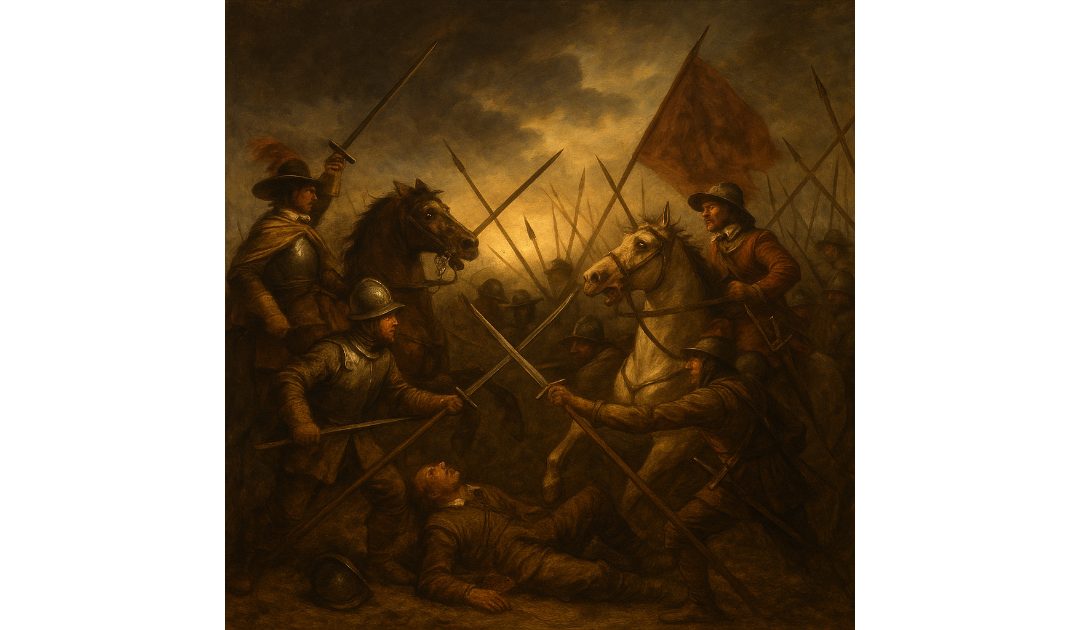The Battle of Marston Moor, fought on the 2nd of July 1644, was a decisive engagement during the English Civil War, pitting the Royalist forces of King Charles I against the combined armies of the Parliamentarians and Scottish Covenanters. This battle marked a turning point in the conflict, decisively shifting the balance of power in the north of England towards the Parliamentarians.
The Royalist army was commanded by Prince Rupert of the Rhine, King Charles I’s nephew and an accomplished military leader. Rupert had marched swiftly to relieve the siege of York, which was being encircled by the allied forces of the Earl of Manchester, Lord Fairfax, and the Scottish commander Alexander Leslie, Earl of Leven. Despite Rupert’s strategic prowess, his decision to engage the allied army at Marston Moor without consolidating his position proved fateful.
The battlefield, an expanse of open moorland near Long Marston in North Yorkshire, provided both opportunities and challenges. On the evening of the 2nd of July, under gathering storm clouds, Rupert’s forces prepared to confront the larger allied army, which outnumbered the Royalists approximately 28,000 to 18,000. The allied forces were arranged with the Scots on the left, the Eastern Association under Manchester in the centre, and the troops led by Oliver Cromwell, commanding the cavalry of the Parliamentarian “Ironsides,” on the right.
The battle commenced late in the day, around 7 pm, with an aggressive cavalry charge led by Cromwell on the right flank. His disciplined cavalry, bolstered by Scottish support, overwhelmed the Royalist horsemen. Cromwell’s leadership and tactical acumen were pivotal, earning him significant recognition. On the other flank, however, the Royalists initially had more success, routing the Parliamentarian cavalry. Yet, Cromwell’s forces, having secured their side, wheeled around to attack the Royalist rear and centre, turning the tide.
The Royalist infantry, though fighting valiantly under Lord Goring, could not withstand the combined assaults. The battle raged into the twilight hours, with the Royalists suffering heavy casualties—estimates suggest around 4,000 dead. The Parliamentarians and Scots secured a comprehensive victory, capturing York shortly thereafter. This defeat effectively ended Royalist dominance in the north of England.
The Battle of Marston Moor was significant not just for its immediate military outcome but for its broader political ramifications. It showcased the effectiveness of the New Model Army’s disciplined, merit-based approach, epitomised by figures like Cromwell. The battle also highlighted the strategic importance of alliances, as the cooperation between Parliamentarian and Scottish forces proved instrumental.

